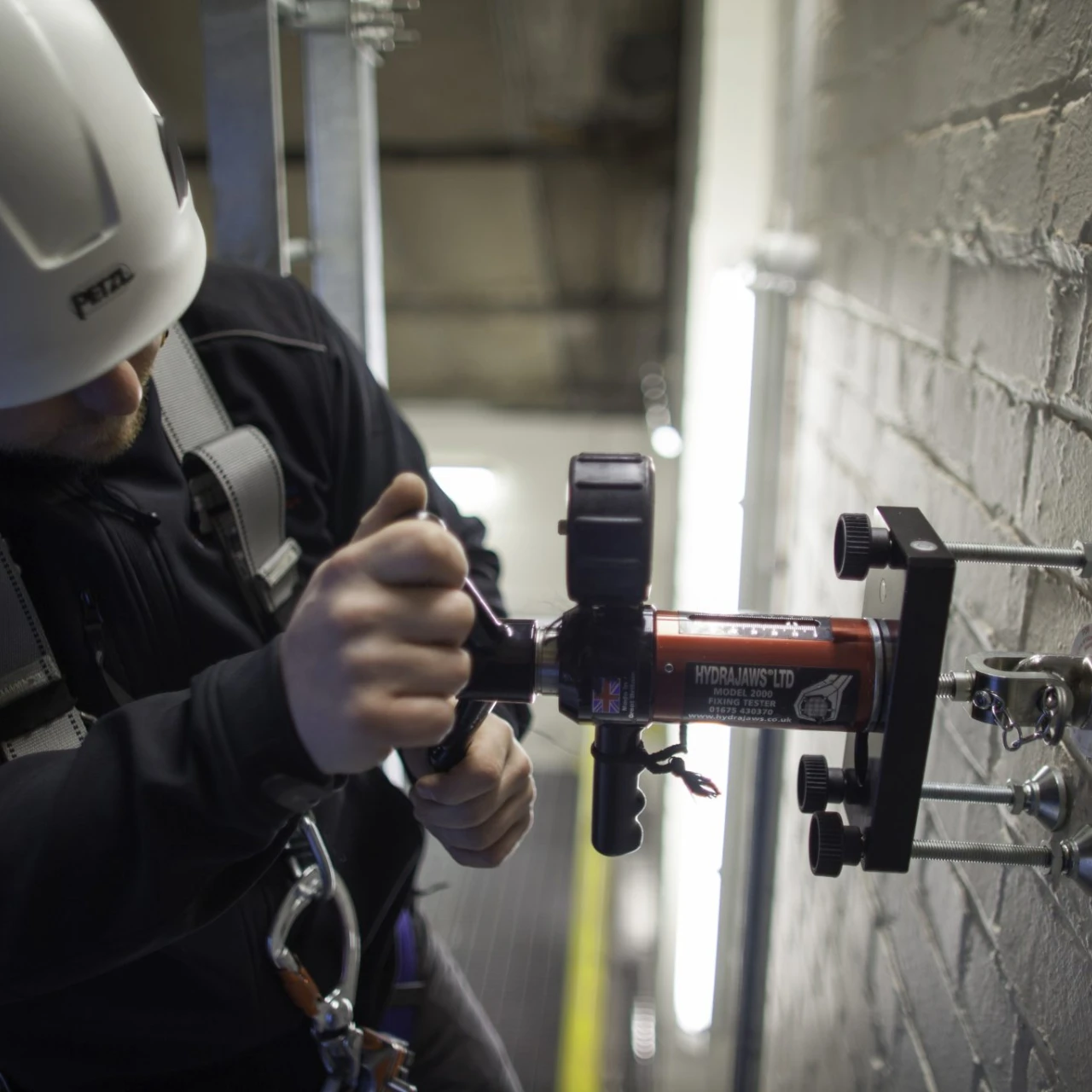

- Knowledge Base
- Blog
- Setting the standard for eyebolts…
Setting the standard for eyebolts…
Eyebolts may look fairly innocuous but here John Boyle, Eurosafe Director, looks at why regular testing of single Anchor point and eyebolts is so important.
Class A1 anchor devices, otherwise known as ‘eyebolts’ or ‘window cleaner’s eyebolts’ are structural anchors that are secured to vertical, horizontal, and inclined surfaces on a building. BS 7883:2005 made it imperative that Class A1 anchor devices were periodically examined, which included new recommendations regarding their location and suitability. Eyebolt examinations are required at intervals of no more than 12 months for fall arrest and six months for rope access.
For testing and inspection purposes, the latest British Standard makes it clear that it is not simply a case of removing eyebolts for examination and carrying out a load test to check that it is sufficiently load-bearing. The guidance goes further than previous requirements, placing extra responsibility on the test and inspection engineer, for example, to ensure that the eyebolt is of an approved type that is appropriate to the structure and that the anchor device is manufactured from materials suitable for the corrosion conditions. The tester must also ensure as far as is possible that the positioning of the eyebolt meets the manufacturers’ requirements, for example, by checking the edge distances in accordance with their recommendations.
Overall this means that the tester needs to take a holistic approach to eyebolt inspection. Instead of simply testing that the eyebolt is fit for purpose in isolation, it must also be in an appropriate location and in an environment that would have been recommended by the manufacturer. Under the new guidance, the onus is also on the test and inspection engineer to recommend if a new location should be found for the eyebolt, which would offer better protection for the user.
The other British Standard that we work to when testing A1 anchors is BS EN 795. When we test, examine, and certify an anchor device it means it is effectively fit for purpose, giving the customer the confidence that workers and contractors are being protected. This means that inferior installations - maybe those that were installed prior to the new regulations, will be deemed unfit and may need to be replaced, therefore providing a higher level of safety for the user and greater peace of mind for the building owner.
Before we carry out an examination, we ask the client to supply a copy of the documentation provided by the original installer, which gives the examination requirements. This would confirm such requirements as whether it is for a solid or a cavity wall construction. If the documentation is not available, the recommendations of BS7883:2005 are followed for the relevant type of structure.
One of the first jobs is to check whether or not a through-fixed installation has been made. There are a number of checks which are then carried out for general eyebolts, and even more for eyebolts fitted onto solid structures. Labelling is important with eyebolts and we clearly identify them as for ‘Fall Arrest’ for ’For Rope Access’ only or ‘For Work Positioning’ only. Labels for Restraint should show that anchor devices are for restraint only and for a single user. All this ensures that particular anchor points are being used correctly, which reduces any associated risks.
Load testing devices should direct loads at least 50mm from the centre line of the anchor device and into adjacent masonry to test the strength of the mortar joint. The load should be held for 15 seconds at least, without showing any signs of failure – such as movement of the anchor point or damage to the structure, including mortar joints.
When the examination is completed, we provide a report detailing the tests that have been carried out and the results. Each anchor device is listed as suitable for use or is withdrawn from service, with the reasons outlined, plus any remedial work required. We include in the report a warning against misuse of eyebolts, plus highlight the need for all anchor devices to be inspected prior to individual usage. The ultimate aim of the testing and inspection process is to ensure eyebolts are fully compliant, as well as minimising the risks to users of this specific form of fall protection equipment.
At Eurosafe, we see on a daily basis how the latest British Standard 7883:2005 is raising standards in the industry. We also believe that this holistic approach to testing of eyebolts should be rolled out to other fall protection systems that require six monthly or annual inspections. The end result would mean a safer, better working environment for anyone involved in maintenance works on roofs and greater peace of mind for building owners and contractors.














